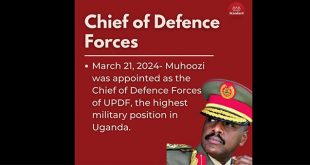
According to commentators, Kaboyo’s move is part of a deliberate move by Museveni to create a close-knit family of future NRM leaders. “It’s a sort of political transition strategy,” one source told The Independent. If the description is accurate, the move would be a replay of a page from Museveni’s book on long term strategy. In the early 1970s, Museveni built bonds with Rwandan refugees that would later join him in FRONASA, UPM, and the Luweero bush war.
Throughout his administration, Museveni has depended on a close-knit core of people he recruited in school; either at Ntare School or the University of Dar es Salaam, including Gen. Elly Tumwine. Museveni first met the late Eriya Kategaya at Kyamate Primary School, he met Black Mwesigwa at Mbarara High School, and Martin Mwesigwa when they were just nine years old. They are all veterans of the Luweero war. Most are deceased.
The NRM leaders operate in similar fashion. Many form lifelong bonds. During the attack on Kabamba, one of the spies who fed the fighters was a woman called Jane Komugisha who some of the commanders of the attackers, Pecos Kutesa and David Tinyefuza aka Sejusa had met in school in the 1970s. The same can be said of the cohort in the army of Gen. Muhoozi Kainerugaba, the First son. Based on this, the walk could be seen as a bonding pilgrimage. The youth among the 1000 “carefully selected” walkers could be seen as the future leaders and the veterans and elders that walked with them as their handlers and mentors.
So why did they fight?
“It is good for the youth to know commitment and sacrifice,” Museveni said on Day 4 of the trek in Mubende District, “It is good for you to know this history and to know how people can sacrifice, not for personal gain but collective gain.”
Museveni was speaking during part of the morning routine of the trek, when the aging veterans of the bush war narrated their experiences to the mainly youthful walkers. Emotions flowed. Some wept openly, others showed scars, amputated limbs, and listed the friends they lost in the battles.
But others are questioning the motive of the walk. Some say that together with the stories of recollection, there should have been moments of soul-searching among the men and women who fought the war and are now in charge of the state apparatus.
“Recalling what happened is good but not enough,” one pundit said, “There should have been focus on why they fought and questions about why the same things they fought against persist today.”
“They went to the bush to ‘liberate’ Uganda from dictatorship, corruption, rigged elections, impunity, to stop leaders clinging to power forever by hook and crook, and so on. I can hear some people falling off their chairs in laughter because the Museveni government has itself done all the above and more,” wrote veteran Uganda journalist Charles Onyango-Obbo.
Onyango-Obbo pointed out that as Museveni walked, opposition MP and aspiring People Power presidential flag bearer in the 2021 elections, Robert Kyagulanyi (more known by his musician’s name Bobi Wine) and several of his supporters were arrested by police as they tried to hold a consultative meeting in his Kyadondo East constituency. Police broke up the meeting with teargas and live bullets.
“Someone obviously wasn’t thinking right,” Onyango-Obbo wrote, “arresting Bobi Wine and his supporters for exercising their freedom of assembly and association, some of the things the NRA/NRM claim they went to the bush to fight for, at exactly the time when Museveni is on a pilgrimage to highlight its legacy is a mega self-own.”
“Could it be that NRA/NRM went to the bush not to liberate the country, but themselves – or indeed just one man?” he added.
 The Independent Uganda: You get the Truth we Pay the Price
The Independent Uganda: You get the Truth we Pay the Price


